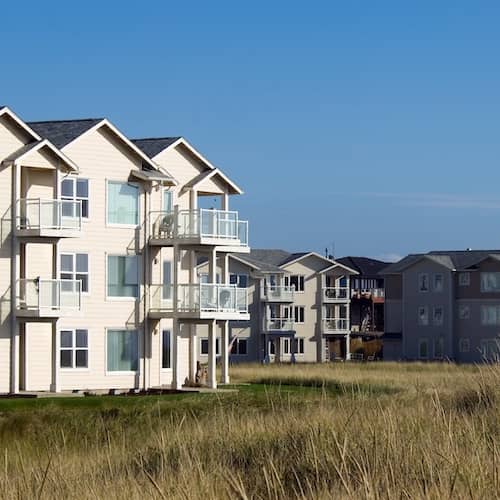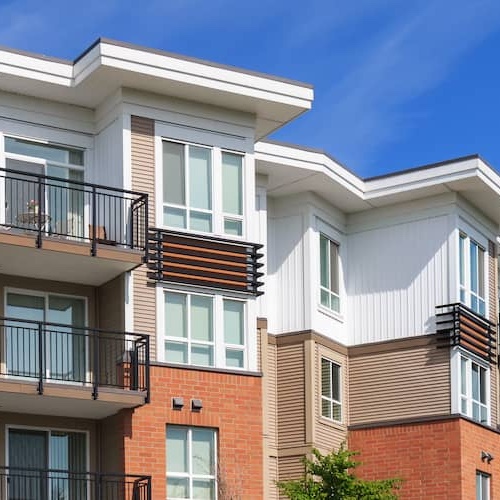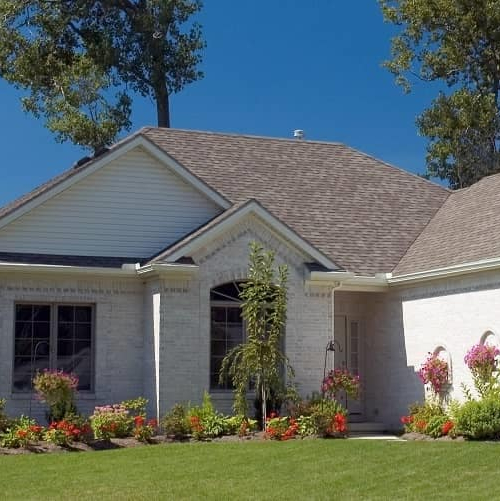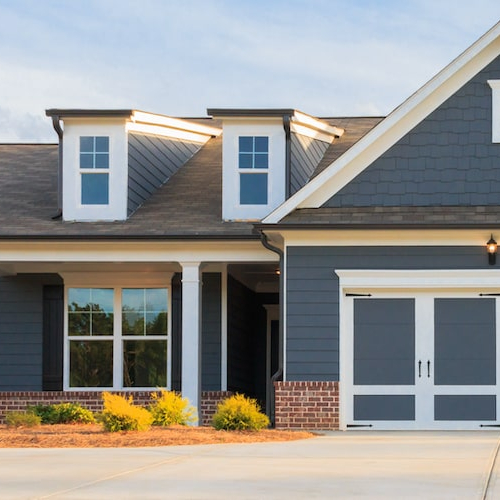Condo insurance vs. homeowners insurance: What’s the difference?
Contributed by Sarah Henseler
Oct 29, 2025
•6-minute read

If you own a house, homeowners insurance protects you against damage to your home and loss of personal property. It also offers liability coverage in case someone gets hurt on your property, whether it’s inside your house or on your land.
But many are surprised to learn that condo insurance is not the same as homeowners insurance, with different types of coverage and costs. Understanding those differences is important because the responsibilities of single-family home owners and condo owners are different. The homeowner is solely responsible for his or her entire structure and property. The condo owner shares responsibility with other residents for common areas and amenities.
Knowing the differences between homeowners insurance vs condo insurance ensures you don’t have any costly surprises if tragedy strikes.
Comparing homeowners and condo insurance policies
The major distinction between homeowners insurance and condo insurance has to do with who is responsible for insuring a property’s physical structure. Homeowners insurance, which comes in the form of an HO-3 policy, covers the entire structure, outside and in, including the property it sits on.
Condo insurance – an HO-6 policy – is designed for those who share a structure and/or property with others. Therefore, condo insurance typically covers only the individual unit’s interior and the policy owner’s belongings, along with liability coverage. The condo association carries a “master policy” that covers the rest of the structure and the common areas and amenities, like gyms and pools.
Because homeowners insurance policies (HO-3) cover more than condo insurance policies (HO-6), they are typically more expensive.
So, what if you own something in between, like a townhome, or a single-family home in a private community with a homeowners association (HOA) with HOA fees? Typically, an HOA will carry a master policy that covers certain shared areas and usually your property’s structure. But the responsibility for insuring your townhome or house’s structure is sometimes still yours.
Here’s a quick breakdown of the difference between the two policies:
| Features | Homeowners insurance (HO-3) | Condo insurance (HO-6) |
|---|---|---|
| Dwellings | Covers the full structure | Covers the interior unit only |
| Master policy | The only policy protecting the house | Provided by the condo association |
| Liability coverage | Included | Included |
| Common areas | Depends on if the neighborhood has an HOA | Always covered by the HOA |
| Premium cost | Typically higher | Typically lower |
What is homeowners insurance?
A standard HO-3 homeowners insurance policy protects your entire property, including your home’s structure and the property you own. It also covers your personal belongings, detached structures like garages or fences, and provides liability protection and living expenses for you if your home becomes uninhabitable from a covered event.
There are some things that standard homeowners insurance policies don’t cover, however. That may include damage from earthquakes, floods, landslides, sinkholes, and more. That’s why it’s vital to shop policies and read your policy carefully.
Still, because homeowners insurance has such broad coverage compared to condo coverage, it’s vital to know the ways they differ.
What is condo insurance?
Condo insurance (an HO-6 policy) differs from homeowners insurance in many important ways. The main one is that condo insurance typically only covers the interior of your individual unit and your personal belongings. It also provides liability coverage for someone injured in your condo.
The exterior and structure of your condo, along with the surrounding common grounds and amenities, are covered by your condo association’s master policy.
What does HO-6 cover?
An HO-6 policy gives you important protection for the inside of your unit. Condo insurance protections are often called “walls-in” coverage for that reason. Here’s what this coverage typically provides:
- Interior walls coverage: This covers the inside of your condo, including drywall, paint, and built-in fixtures.
- Personal property protection: This covers your personal belongings against theft or damage. Think furniture, electronics, and clothing.
- Liability coverage: This provides you with protection in case someone is injured inside your condo or if you accidentally cause damage to someone else’s unit.
- Loss of use coverage: This pays for living costs in the case of your condo being uninhabitable due to a covered event. These costs include things like dining out, hotel stays, and more.
- Loss assessment coverage: This helps pay for your share of damages to your association’s common areas if the condo association’s master policy doesn’t fully cover the cost.
Often, condo associations will set rules about the level of coverage you must carry. Whenever you shop for a new policy, the association’s rules should be carefully reviewed so there are no nasty surprises later.
What does an HO-6 policy not cover?
While your HO-6 policy gives you important coverage for your personal space and property, there are important exclusions. These are vital to understand. For instance, your HO-6 policy usually doesn’t cover your condo’s building or structure, the roof, elevators, or other shared spaces. These are covered by your condo association’s master policy.
Here’s a short list of things typically covered by your association’s master policy, but not your HO-6 policy.
- Exterior walls
- Roofs
- Hallways
- Elevators
- Original interiors such as floors and fixtures
- Common areas like pools, lobbies, and gyms
- Shared systems such as HVACs and electrical systems
HOAs play an important part in your coverage. Your HOA dues help pay for the condo association’s master policy. But policies differ. For instance, some association’s policies cover condos as they were originally built, including things like kitchen cabinets and fixtures. Others do not, so it’s important to read them carefully to clear up any misconceptions about your coverage.
Do lenders require condo insurance?
In a word, yes. Most lenders require you to have proof of condo insurance before closing on your mortgage. This protects both them and you financially in case of damage or loss. Typically, the strictest requirements are imposed by government-backed loans such as VA loans and FHA loans.
But remember, an HO-6 policy is not a frivolous cost. It protects you from any gaps in the coverage provided by your condo association’s master policy.
How to get the right coverage for you
It’s vital to get the proper coverage for your personal situation. Typically, condo insurance is less expensive than homeowners insurance, but, just like homeowners insurance, premiums are based on many factors. For instance, it can be influenced by the age, condition, and type of building, your claims history, and the value of your personal belongings. Also similar to homeowners insurance, local risk factors, such as crime rates or adverse weather events, can influence rates.
An important step in choosing an HO-6 policy is to review your condo association’s master policy for what it covers. You’ll want your personal condo insurance to fill in any gaps in that coverage. A good place to start is Rocket Mortgage®, which has the resources and experts to help ensure that your personal needs are fully covered at the lowest possible rate.
FAQ
Does condo insurance cover water damage?
Yes, but only for water damage caused by things like leaky or burst pipes, clogged drains, and other similar problems. You’re not covered for floods.
Can I be fined for not having condo insurance?
Possibly. Condo associations have their own rules and regulations and lenders typically demand you have an HO-6 policy. Violating these rules could result in fines.
What is ‘walls-in’ coverage?
Walls-in coverage means the insurance protects only what’s inside the exterior walls of your unit. In other words, it typically won’t cover things like roofs, exterior walls, and other outdoor areas.
How much insurance do I need for a condo?
The answer depends on many factors, including the value of your personal belongings, the location of your condo, the coverage that your condo association’s master policy provides, your lender’s requirements, and more. It’s best to consult a professional.
Are condos expensive to insure?
Generally no. Because the condo association’s master policy covers the structures and exterior areas, condo insurance is typically more affordable than homeowners insurance.
The bottom line: Condo insurance protects what matters to you
While condo insurance and homeowners insurance may seem similar, they are very different. A condo insurance policy (HO-6) protects the inside of your individual unit and your personal belongings, relying on your condo association’s master policy to insure the exterior, common areas, and amenities. A homeowners insurance policy (HO-3) covers the policy-holders home – both interior and exterior and the property. They both provide liability protection.
Choosing the right condo insurance policy for your needs depends on many factors, including the value of your personal belongings, your location, the coverage provided by your association’s master policy, and more.
If you’re in the market for a new condo, Rocket Mortgage can help you explore all your borrowing needs.

Terence Loose
Related resources

5-minute read
Condo vs. apartment: What’s the difference?
What are the differences between apartments and condominiums? Learn more about the pros and cons of each before you decide which is right for you.
Read more

5-minute read
Condo vs. house: Which is best for you?
Trying to decide between buying a condo or a house? Learn the key differences in cost, maintenance, lifestyle, and more to make the right choice for you.
Read more

12-minute read
20 popular types of houses and home styles
We rounded up the most common types of houses and provided their key features, pros, cons and photos so you can find the home style that best fits you.
Read more